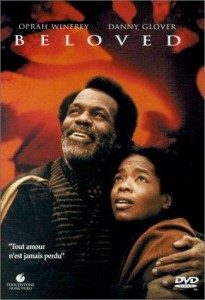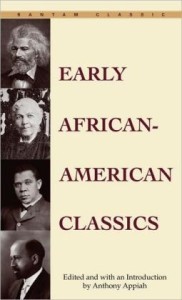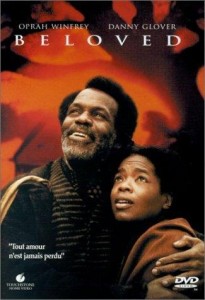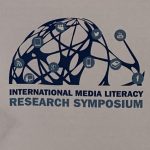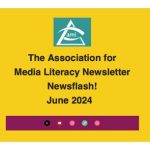Oral History & Media Messages (ENG4U)
As an introduction to prepare students for the study of the novel Beloved, students examine oral history and identity through literature, through the use of slave narratives, in order to better understand Black History.
Materials:
- Early African American Classics, focusing on famous slave narratives by Frederick Douglass and Harriet Jacobs
- Unchained Memories (Black History-related documentary film)
- Beloved (feature film starring Oprah Winfrey)
- Voices From the Days of Slavery (online, recorded voice interviews with former American slaves, from the U.S. Library of Congress, American Memory website (http://memory.loc.gov/ammem/index.html): African American History).
- AML Media Studies Triangle (use as a handout)
- AML Eight Key Concepts of Media Literacy (use as a handout)
- AML Media frameworks – Codes and Conventions (use as a handout)
- Compare/Contrast handouts (use for narratives, films, etc.)
Key Concepts of Media Literacy addressed in this activity:
- Media construct reproductions of reality.
- Audiences use past experiences and skills to negotiate meanings in media texts.
- Media texts communicate values messages.
- Media texts communicate social messages.
- Media texts’ form and content combine to communicate meaning.
- Each medium has a unique aesthetic that helps determine what is effective and pleasing.
Curriculum Expectations:
- Focus on the art, meaning, and messaging of various forms of media texts; particularly on the construction of meaning through the combination of several media “languages” – images, sounds, graphics and words.
- Understanding how media texts are constructed and why they are produced.
- Being attuned to discriminatory portrayals of individuals and groups, such as minorities.
- Developing communication skills, including the ability to critically interpret the messages they receive through the various media, and to use these media to communicate their own ideas effectively.
- Developing media literacy skills by viewing, analyzing and discussing a variety of media texts and relate them to their own experience.
- Developing the skills required to understand, create and critically interpret media texts.
- Exploring the use and significance of particular conventions and techniques in the media, and consider the roles of the viewer and producer in constructing meaning in media texts.
- Applying the knowledge and skills gained through analysis of media texts as they create their own media texts.
- Explaining how media texts, including complex and challenging texts, are created to suit particular purposes and audiences.
- Interpreting media texts, including complex and challenging texts, identifying and explaining with increasing insight the overt and implied messages they convey.
- Evaluating how effectively information, ideas, themes, issues, and opinions are communicated in media texts, and decide whether the texts achieve their intended purpose.
- Explaining, with increased insight, why the same media text might prompt different responses from different audiences.
- Identifying and analyzing the perspectives and/or biases evident in texts, including complex and challenging texts, commenting with understanding and increased insight on any questions they may raise about beliefs, values, identity and power.
- Identifying general and specific characteristics of a variety of media forms and demonstrate insight into the way they shape content and create meaning.
- Identifying conventions and/or techniques used in a variety of media forms and demonstrate insight into the way they convey meaning and influence their audience.
- Describe the topic, purpose, and audience for media texts they plan to create.
- Selecting the media form best suited to the topic, purpose, and audience for a media text they plan to create, and explain why it is the most appropriate choice.
- Identifying a variety of conventions and/or techniques appropriate to the media form they plan to use, and explain why these will help communicate a specific aspect of their intended meaning most effectively.
- Producing media texts for a variety of purposes and audiences, using the most appropriate forms, conventions and techniques.
- Demonstrating insight into their strengths and weaknesses as media interpreters and producers, and practice strategies they found most helpful when interpreting and creating particularly complex media texts to improve their skills.
- Explaining how their skills in listening, speaking, reading, and writing help them interpret and produce media texts.
Timeline: 7 days
Before: (Day 1)
In order to activate prior form and content knowledge, students may need to be introduced to oral history through literature. Use the slave narratives written by Douglass and Jacobs, featured in Early African American Classics. Students will be introduced to media exploration, and as a class will apply media analysis – using class discussion and handouts including the media studies triangle, key concepts to media literature, and media frameworks codes and conventions – and applying them to the texts studied. Students will begin by reading the Douglass and Jacobs’ narratives (individually, silently), and then answer guided questions in applying media literacy to those texts. A compare/contrast handout—which will be used throughout this unit—will be given to students to document their findings. Class sharing/participation will be documented.
During: (Days 2-5)
Students will compare how the media form of the slave narratives changes the message, including purpose, audience, beliefs and values, and how they create meaning. Students continue to develop their awareness and move towards analysis: students will view Black-History related films/documentaries. Students will use their media handouts as a guide, and continue to fill in their compare/contrast handout as they view the film(s). Students will assess how each different media form changes the message, as they compare/contrast the film experience versus the previous day’s reading.
A brief class discussion will follow. To get students ready for reflection, students will be introduced to their third and final media form: oral recordings on the Internet. Students will listen to a recorded slave narrative (“Voices From the Days of Slavery”) from the U.S. Library of Congress – American Memory website.
Again, students will use their compare/contrast handout, this time comparing and contrasting their oral experience with the previous days’ media texts (film and reading). Students will document their findings in class.
The compare/contrast handout will be collected at the end of class; it will be reviewed to ensure students’ grasp on media literacy, and then returned the next day.
Students will also receive homework: each student will choose one slave narrative from the website to listen to at home, and write a brief reflection on their discoveries (provide questions to guide students).
After: (Days 6-7)
To prepare students for action, reflection and sharing of their learning, begin by returning their compare/contrast handouts. Collect and evaluate their written reflections on online slave narratives. Provide students with a culminating assignment to create their own Slave Narrative, using a medium of their choice, to communicate their ideas.
This is an in-class work period for each student to write and prepare his/her own slave narrative. Part of the assignment will require a reflection on why the student chose that particular medium to communicate his/her ideas, and how the media form effects the message.
The teacher will set the timeline and due date for the evaluation. Students will share their creations, and the class will wrap up the unit with a discussion.
In the following days, the teacher will link the oral history to other in-class assignments on the written word, the literature study of Beloved and more on Black History month.
Media reflection with Slave Narrative: (provide this for students)
Write a brief reflection based on how you integrated media into your own Slave Narrative. Use the Media Triangle and Key Concepts handouts to assist you. Use some of these questions as a guide to your reflection:
- What media text did you create to convey your message?
- Why did you choose this form?
- How did you use images, sounds, graphics and words (media “languages”) to help you construct meaning?
- How did you use media effectively to communicate your ideas?
- How did your analyses of other media texts (slave narratives through literature, documentaries, oral histories online) help you to create your own media text?
- What is the purpose and intended audience for your media text?
- What are the overt and implied messages?
- What audience response(s) do you expect your media text to get?
- Which of your strengths and/or weaknesses did you experience when producing this media text?
(These ideas suit the secondary classroom – ed.)

